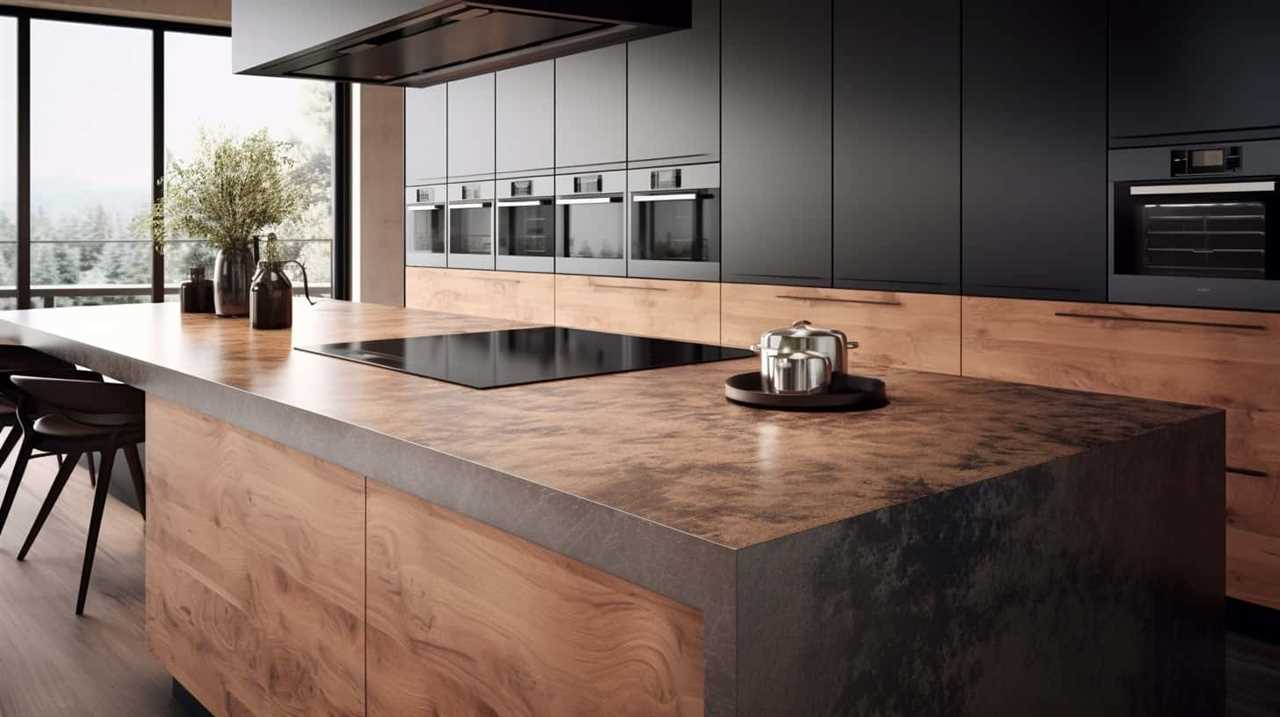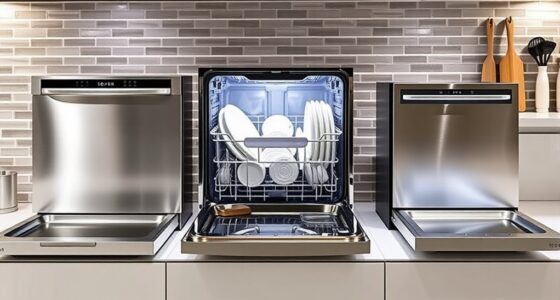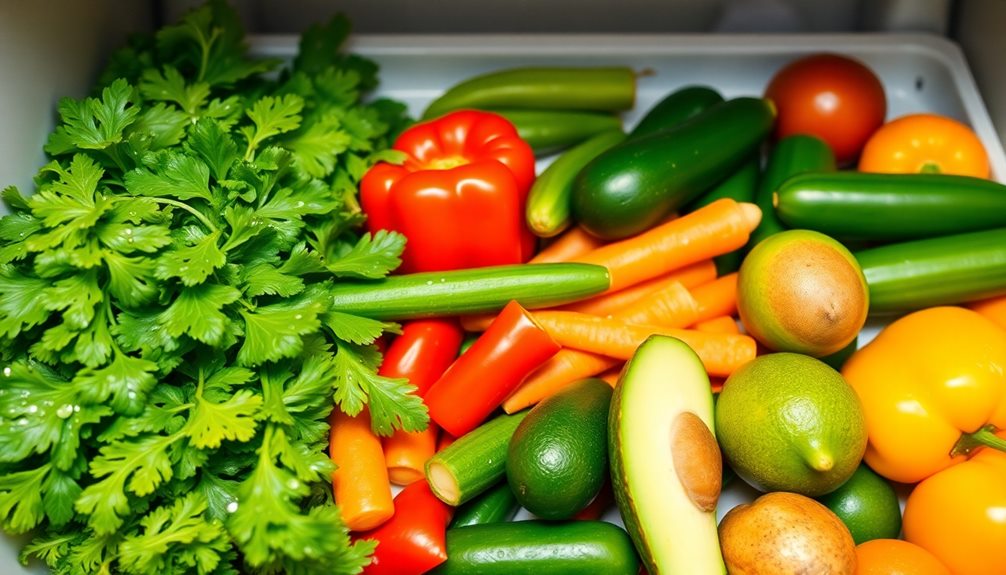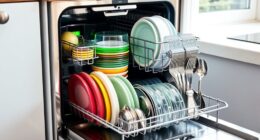As we start our path towards a more environmentally friendly future, we are fortunate to be at a pivotal moment. Interestingly, the demand for eco-friendly appliances is at an all-time high.
So, what are our options? In this article, we will explore the wide range of choices available to us when it comes to selecting appliances that are both energy-efficient and environmentally conscious. From energy-saving refrigerators to water-saving washing machines, we will delve into the world of eco-friendly appliances that not only reduce our carbon footprint but also provide us with superior performance and functionality.
Additionally, we will explore the use of sustainable materials, smart technology, and recycling options, all aimed at helping us make informed decisions as we strive for a greener future.
Key Takeaways
- Energy-efficient appliances contribute to reducing carbon footprint and saving money on utility bills.
- Water-saving options help conserve water and reduce strain on water treatment facilities, leading to cost savings on water bills.
- Sustainable materials and manufacturing practices, such as using bamboo and recycled materials, minimize waste and conserve energy.
- Smart technology and connectivity in appliances optimize energy usage, enhance efficiency, and offer convenience through remote monitoring and control features.
Energy-Efficient Appliances
Energy-efficient appliances can significantly reduce our carbon footprint and save us money on our utility bills. When it comes to energy saving tips and cost-effective solutions, investing in energy-efficient appliances is a great place to start. These appliances are designed to use less energy while still providing the same level of performance. By opting for energy-efficient refrigerators, washing machines, dishwashers, and other household appliances, we can make a positive impact on the environment and our wallets.

One of the key benefits of energy-efficient appliances is their ability to reduce our carbon footprint. Traditional appliances consume large amounts of energy, contributing to greenhouse gas emissions and climate change. Energy-efficient appliances, on the other hand, are designed to use less electricity or gas, resulting in lower emissions. By replacing our old appliances with energy-efficient models, we can play a part in mitigating climate change and creating a more sustainable future.
Not only do energy-efficient appliances help the environment, but they also offer significant cost savings. While the initial cost of purchasing energy-efficient appliances may be higher than their non-efficient counterparts, the long-term savings on utility bills make up for the investment. These appliances are designed to use less energy, which means lower electricity or gas bills. Over time, the savings can add up and offset the initial cost of the appliance.
In addition to reducing our carbon footprint and saving money, energy-efficient appliances also offer other benefits. They often come with advanced features and technologies that enhance their performance and convenience. For example, energy-efficient refrigerators may have better insulation, adjustable temperature settings, and energy-saving modes. These features not only save energy but also ensure that our food stays fresh for longer.
When shopping for energy-efficient appliances, it’s important to look for the Energy Star label. This label indicates that the appliance meets strict energy efficiency guidelines set by the Environmental Protection Agency (EPA). By choosing appliances with the Energy Star label, we can have confidence that they’re both energy-efficient and of high quality.

Water-Saving Options
When it comes to conserving water, there are several options available for eco-friendly appliances. One option is rainwater harvesting, which involves collecting rainwater and using it for various purposes such as watering plants or flushing toilets. This not only helps to reduce water consumption but also takes advantage of a natural resource that’s readily available.
Another option is installing low flow fixtures, such as low flow showerheads and faucets, which reduce the amount of water used without sacrificing performance. These fixtures work by aerating the water, creating the illusion of a higher water flow while actually using less water.
By incorporating rainwater harvesting and low flow fixtures into our homes, we can significantly reduce our water consumption and contribute to a more sustainable future. Not only does this help to conserve a precious resource, but it also reduces the strain on water treatment facilities and infrastructure. Additionally, these water-saving options can lead to cost savings on water bills, making them a practical choice for homeowners.
Transitioning into the next section about sustainable materials and manufacturing, it’s important to consider not only the water-saving features of appliances but also the materials used in their construction and the manufacturing processes involved.

Sustainable Materials and Manufacturing
To further enhance the eco-friendliness of our appliances, we can explore sustainable materials and manufacturing methods. By incorporating sustainable design practices and utilizing renewable resources, we can reduce the environmental impact of appliance production. Here are a few options to consider:
- Bamboo: This fast-growing plant is a sustainable alternative to traditional wood materials. It’s durable, renewable, and requires fewer resources to grow.
- Recycled materials: Using recycled materials, such as plastic or metal, can significantly reduce the need for virgin resources. This helps to minimize waste and conserve energy.
- Energy-efficient manufacturing: Implementing energy-efficient manufacturing processes can reduce greenhouse gas emissions and lower energy consumption during production. This can be achieved through the use of renewable energy sources and optimizing production techniques.
- Lifecycle assessment: Conducting a lifecycle assessment allows manufacturers to identify areas where improvements can be made, from raw material sourcing to product disposal. This holistic approach ensures that sustainability is considered throughout the entire lifespan of the appliance.
Smart Technology and Connectivity
- Another option to enhance the eco-friendliness of our appliances is by incorporating smart technology and connectivity. By integrating smart home automation into our appliances, we can achieve greater energy efficiency, reduce waste, and improve overall sustainability. The benefits of connectivity in our appliances are numerous and can have a significant impact on our environment.
One of the key advantages of smart technology is its ability to optimize energy usage. Smart appliances can automatically adjust their settings based on usage patterns and energy demand, resulting in reduced energy consumption. For example, a smart thermostat can learn our heating and cooling preferences and adjust itself accordingly, minimizing energy waste.
Connectivity also allows us to remotely control and monitor our appliances. This means we can turn off appliances when not in use, even if we’re not at home, avoiding unnecessary energy consumption. Additionally, we can receive real-time energy usage data, enabling us to make informed decisions about our energy consumption and identify areas for improvement.
To further illustrate the benefits of smart technology and connectivity, let’s take a look at the table below:

| Benefits of Smart Technology and Connectivity |
|---|
| Enhanced energy efficiency |
| Reduced energy waste |
| Remote control and monitoring capabilities |
| Real-time energy usage data |
Recycling and Disposal Options
Another option we have for enhancing the eco-friendliness of our appliances is through recycling and disposal options. Proper waste management and responsible disposal of appliances are essential in reducing their environmental impact. Here are some options to consider:
- Recycling: Many appliances, such as refrigerators, washing machines, and televisions, contain valuable materials like metal, plastic, and glass that can be recycled. Look for local recycling programs or specialized recycling centers that accept these items. Recycling not only reduces landfill waste but also conserves resources by reusing materials.
- Donating: If your appliance is still in good working condition, consider donating it to a charity or organization that can use it. This helps extend the life of the appliance and reduces the need for new manufacturing.
- Trade-in programs: Some manufacturers or retailers offer trade-in programs where you can exchange your old appliance for a discount on a new, more energy-efficient model. This not only helps you upgrade to a greener option but also ensures that your old appliance is disposed of responsibly.
- Manufacturer take-back programs: Some appliance manufacturers have take-back programs where they accept and recycle their own products at the end of their life cycle. Check with the manufacturer of your appliance to see if they offer this option.
By choosing the right recycling and disposal options for our appliances, we can contribute to a more sustainable future and reduce the environmental impact of our actions.
Let’s make responsible waste management a priority in our quest for eco-friendly appliances.
Frequently Asked Questions
Are There Any Tax Incentives or Rebates Available for Purchasing Eco-Friendly Appliances?
Tax incentives and rebates can provide significant savings when purchasing eco-friendly appliances. These incentives are offered by various government agencies and utility companies to encourage energy efficiency and reduce carbon emissions. By taking advantage of these programs, you not only contribute to a greener environment but also enjoy long-term energy savings.

It’s important to research and understand the specific incentives available in your area, as they can vary depending on your location and the type of appliance you’re considering.
How Can I Determine if an Appliance Is Truly Eco-Friendly and Not Just Marketed as Such?
When determining appliance eco-friendliness, it’s important to look beyond marketing claims. Greenwashing in appliance marketing can make it difficult to differentiate between genuinely eco-friendly appliances and those that are simply marketed as such.
To make an informed decision, consider factors such as energy efficiency, water usage, materials used, and certifications like Energy Star. Researching reviews and comparing different models can also help you determine if an appliance is truly eco-friendly and not just a marketing ploy.
What Is the Average Lifespan of Eco-Friendly Appliances Compared to Traditional Ones?
When comparing the average lifespan of eco-friendly appliances to traditional ones, it’s important to consider the energy efficiency benefits. Eco-friendly appliances are designed to consume less energy, which can extend their lifespan.

On average, eco-friendly appliances tend to last as long as, if not longer than, traditional appliances. This is due to their advanced technology and durable construction.
Investing in eco-friendly appliances not only helps the environment but also ensures long-term savings on energy bills.
Are There Any Eco-Friendly Appliances That Are Specifically Designed for Small Living Spaces or Apartments?
When it comes to eco-friendly appliances for tiny homes or small apartments, there are definitely options available. These energy-efficient appliances are specifically designed to maximize space while minimizing energy consumption. They can be a game-changer for those living in limited square footage, allowing you to enjoy all the benefits of modern appliances without sacrificing your commitment to sustainability.
Can I Recycle My Old Appliances When I Purchase New Eco-Friendly Ones?
When we purchase new eco-friendly appliances, we often wonder about the recycling options for our old ones. Recycling old appliances isn’t only possible, but it also has a positive impact on the environment.

Many appliance manufacturers offer recycling programs where they take back old appliances and properly dispose of them. This helps reduce landfill waste and ensures that valuable materials are reused.
Are the Top Reviewed Eco-Friendly Kitchen Appliances also energy efficient?
Yes, the top ecofriendly kitchen appliances are also energy efficient. These appliances are designed to consume less energy while still providing top-notch performance. Look for ENERGY STAR certified products to ensure that your eco-friendly kitchen appliances are also energy efficient.
Conclusion
In conclusion, when it comes to choosing eco-friendly appliances, there are numerous options available to us. By opting for energy-efficient appliances, water-saving options, sustainable materials, and smart technology, we can make a positive impact on the environment.
Additionally, recycling and proper disposal of old appliances are essential for minimizing waste.
So, let’s embrace these eco-conscious choices and contribute to a greener and more sustainable future.










